记忆的味道

官话方言区分布图 摘自《中国语言地图集第二版汉语方言卷》
官话方言区
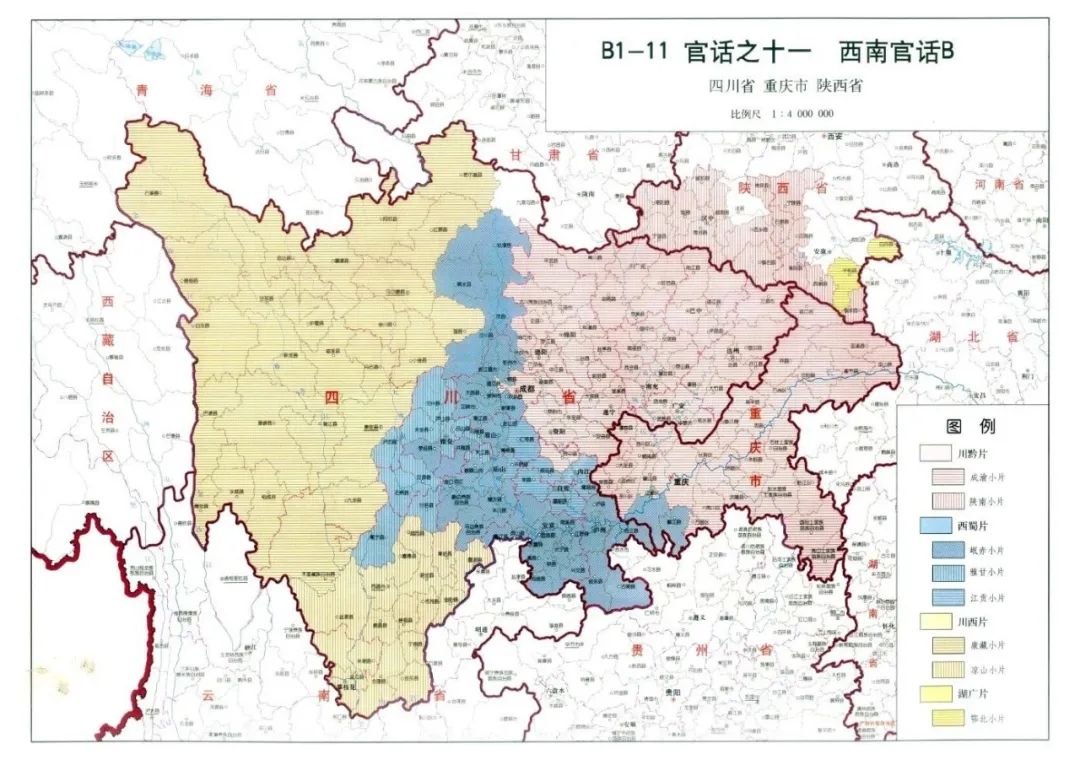
西南官话分布图 摘自《中国语言地图集第二版方言集》
官话方言在汉语分布中范围最广。("Guanhua" or "Mandarin Chinese" (literally "official talk"), is the most widely spoken dialect in China.)主要分布于长江以北绝大多数地区、长江以南的江苏和安徽中部、湖北和四川大部、重庆、云南、贵州、广西北部、湖南的西部和北部以及江西沿江地区。
官话一般可细分为八种次方言(Mandarin includes eight sub-dialects): 东北官话、胶辽官话、北京官话、冀鲁官话、中原官话、江淮官话、兰银官话、西南官话,其中以西南官话为母语者最多。西南官话的主要特征是古入声不分化,整体保留或整体混入它调(阳平、阴平或去声)。(The main characteristic of Southwest Mandarin is that the ancient entering tone is not differentiated, but retained or mixed with other tones as a whole(rising tone, high and level tone or falling tone.)《中国语言地图集》中将西南官话分为十二片。通常也可按照地域分为四川话、重庆话、贵州话、云南话等。
1
随着视频的镜头,我们经历了一场重庆轻轨一号线的“红色之旅”,渣滓洞所承载的满腔热血和坚定信仰深深刻入了重庆的红色基因中。接下来,欢迎继续乘坐轨道交通环线,前方到站:涂兴站。站点旁的盘龙立交正是重庆错综复杂交通特点的体现,也是交通大发展、大跨越的一个剪影。
(Following the video, we experienced a "red journey" along the Chongqing Rail Transit Line 1, in which we witnessed the zeal and belief carried by Prison Zhazi in the "red genes" of Chongqing. The Panlong Overpass next to the station is the embodiment of Chongqing's intricate traffic system, as well as a silhouette of the great development of traffic.)
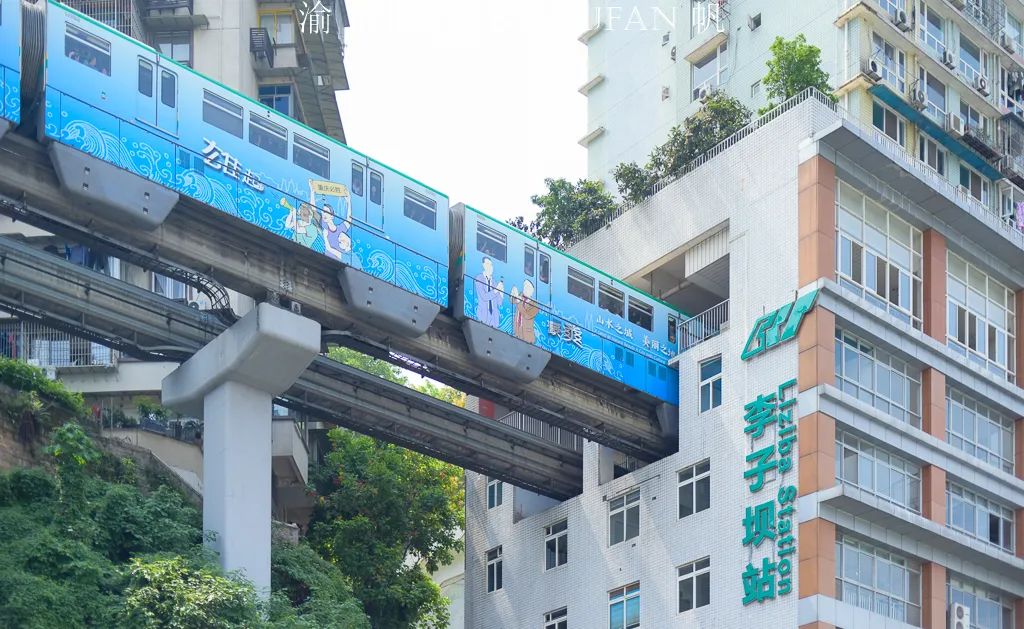
轻轨-李子坝站

盘龙立交桥
2 一座爬坡上坎的城市
爬坡上坎,不仅是对山城地形的精准形容,也是从前重庆市民的主要出行方式。旧时的山城经济条件落后且山地地形陡峭,所以老重庆在山上拥有自己独特的交通秘密基地——步道。以位于渝中区的“山城第三步道”为例,这条全长3.9公里的步道上下高差近80米,串起了不同的街道,以及周边的公园、历史遗迹、地铁站等。(The mountain city used to be economically deprived, and the steep terrain of the city becomes the cradle of its unique mountain footpaths.)
作为重庆传统步道之一,山城步道连接着重庆的上下半城,自古以来是居民出行的交通要道。我们所熟知的“棒棒”们,旧时便会在陡峭的步道上挑着担子扛货,往来穿梭。青石板路旁屹立的老黄葛树,斑驳的旧石墙连接韵味十足的老店铺,步道的特色景象承载着老一辈人的重庆记忆。(The bangbangs (a term in Chongqing dialect referring to porters), as we know, used to shuttle up and down the steep footpaths, carrying a pole with loads on it. The old Ficus virens trees standing along the flagstone paths and the charming old stores linked by the mottled old stone walls combine together to bear the Chongqing memories of the old generation. )
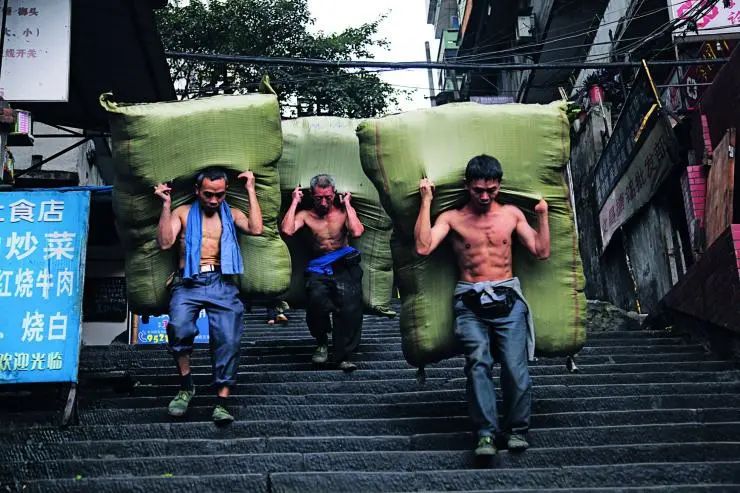
棒棒
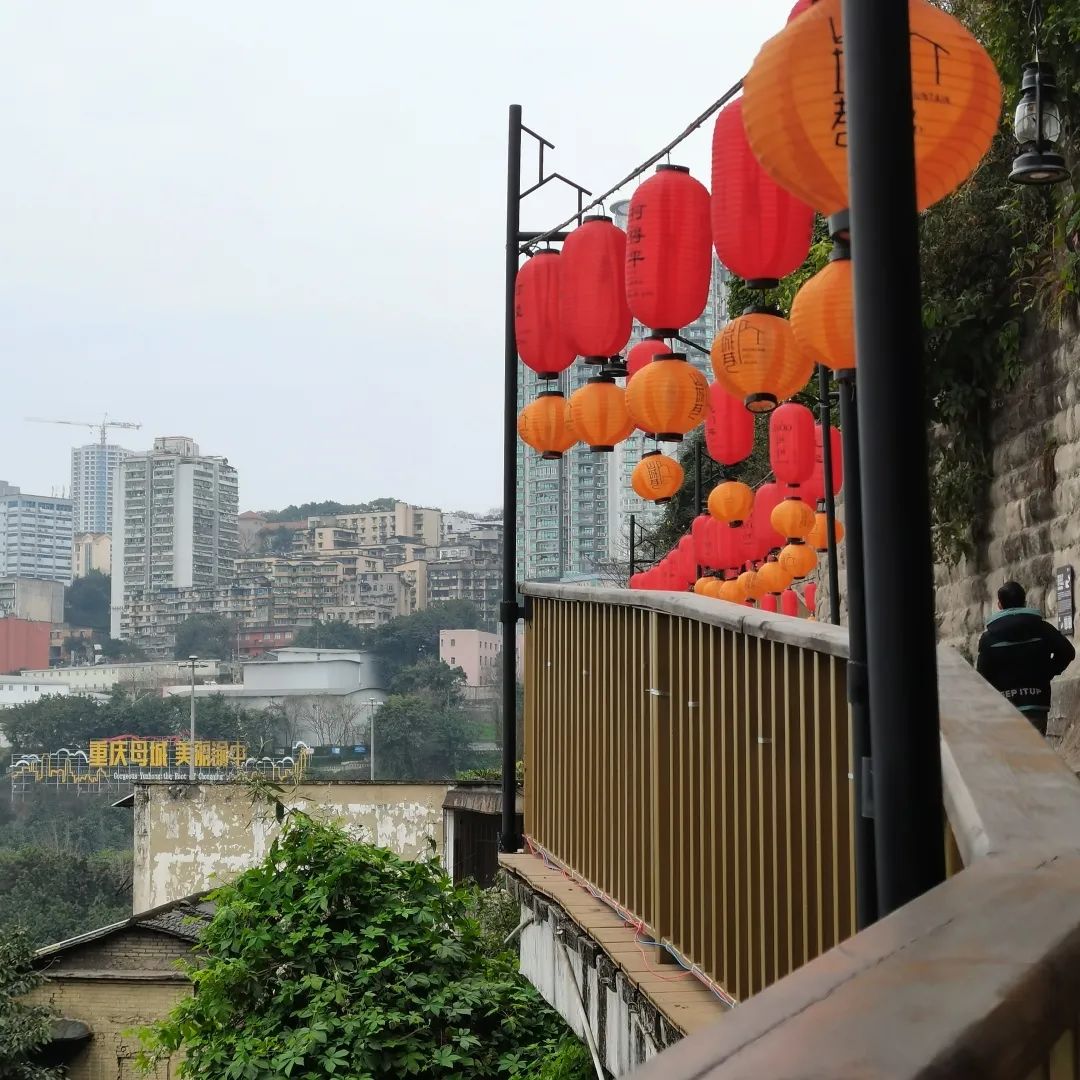
山城步道
步道是人们的“通行桥”,那么立交桥就是车的“行走道”。(While the mountain footpaths enable people to move about, the overpasses enable cars to do so.)
在山城,开车出行上大型立交桥简直就是家常便饭。重庆的立交桥不仅数量多,技术难度还大。每个立交桥设计各有千秋,结构复杂。远远看去,就像是一个大型的迷宫,视觉效果震撼人心。不少中外游客都调侃这是一条“一去不复返”的路。(In Chongqing, driving on the overpasses is very common. Great in number and complex in structure, the overpasses in Chongqing, each having its own charm, look like an awe-inspiring "huge maze" from the distance. Thus, many tourists all over the world jokingly call it "a road of no return.")
其中最具代表的桥梁之一便是盘龙立交桥,又称黄桷湾大桥。这座桥一共设计了5层,每层都通往不同的方向,整个立交桥与地面的距离有38米。此外,该立交桥还设计了20条匝道,分别是通向8个不同地方的重要节点。几小时的路程,只要用盘龙大桥通行后,时间就缩短了一半。
备受限制的客观条件,成就了设计师们的巧妙构思,也造就了全国“最魔幻”的立体交通。
(It is the restrictive geographical conditions that give birth to the designers’ ingenious ideas, which, in turn, give birth to the "most magical" three-dimensional transportation system in China.)
3 一座依水而建的城市
长江和嘉陵江的河道将重庆主城一分为三,江上还没有桥的时候,轮渡曾经是重庆人民渡江的唯一方式。早在1938年,重庆便有了第一条轮渡线路——储奇门到海棠溪航线,而到了抗战时期,轮渡更是重庆市民去往南山躲避日军轰炸的“生命线”。(During the Anti-Japanese War, the ferry was the "lifeline" for Chongqing citizens to go to Nanshan to avoid the Japanese army's bombing.)
重庆轮渡在改革开放初期时最辉煌,那时候两岸的工厂众多,重庆市民必须依靠轮渡进行日常的通勤以及商贸交易(for daily commuting and business transactions)。有资料显示,当时的轮渡公司有四十艘渡船,十九条轮渡线路,高峰期时每一班船要装两百多人,码头的热闹程度不比现在的两路口地铁站差。但是,作为主要交通方式轮渡有不少局限性:它的受载客量不高,通勤时间长,航次极容易受天气等客观因素的影响等。(As the main means of transportation, ferry has many limitations: low passenger capacity, long commuting time, and the influence of factors such as weather on the voyages.)现代生活节奏逐渐加快,轮渡不再是最理想的渡河方式,人们需要更加快速、方便的交通,所以一座座跨江大桥在重庆建成。
轮渡支撑起山水之都的重量,而随着时代的进步,日新月异的技术和勤劳勇敢的人民让跨江大桥成为这座城市另一道风景线。
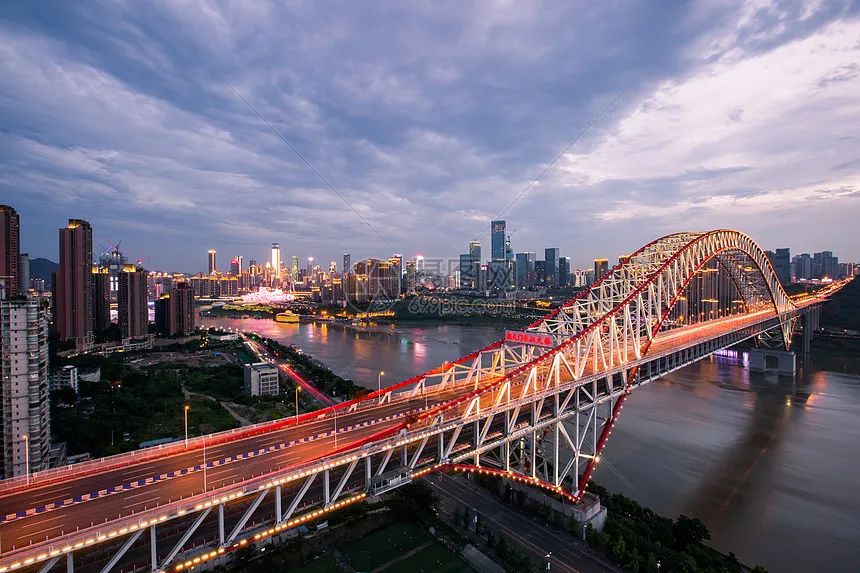
朝天门长江大桥全长1741米,是当之无愧的“世界第一拱桥”。桥墩上的观景台观赏朝天门两江汇流和山城夜景的绝佳位置。
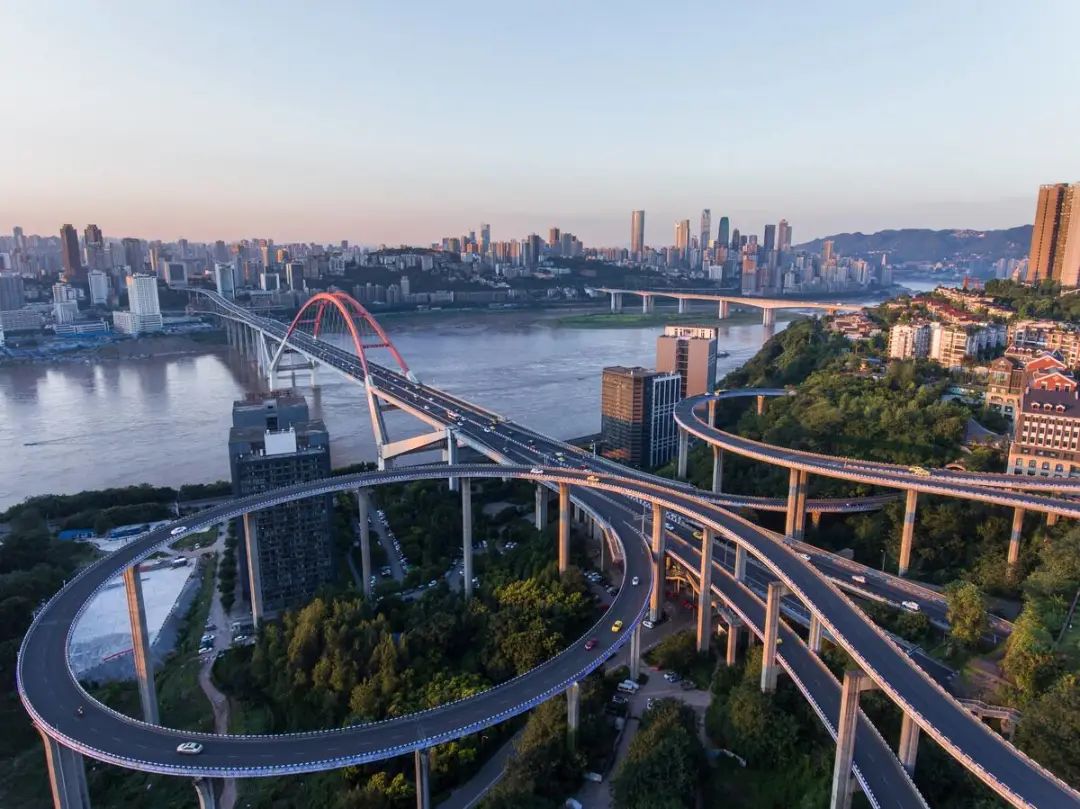
菜园坝大桥全长7千米,是世界第一座公路轻轨两用城市大桥。
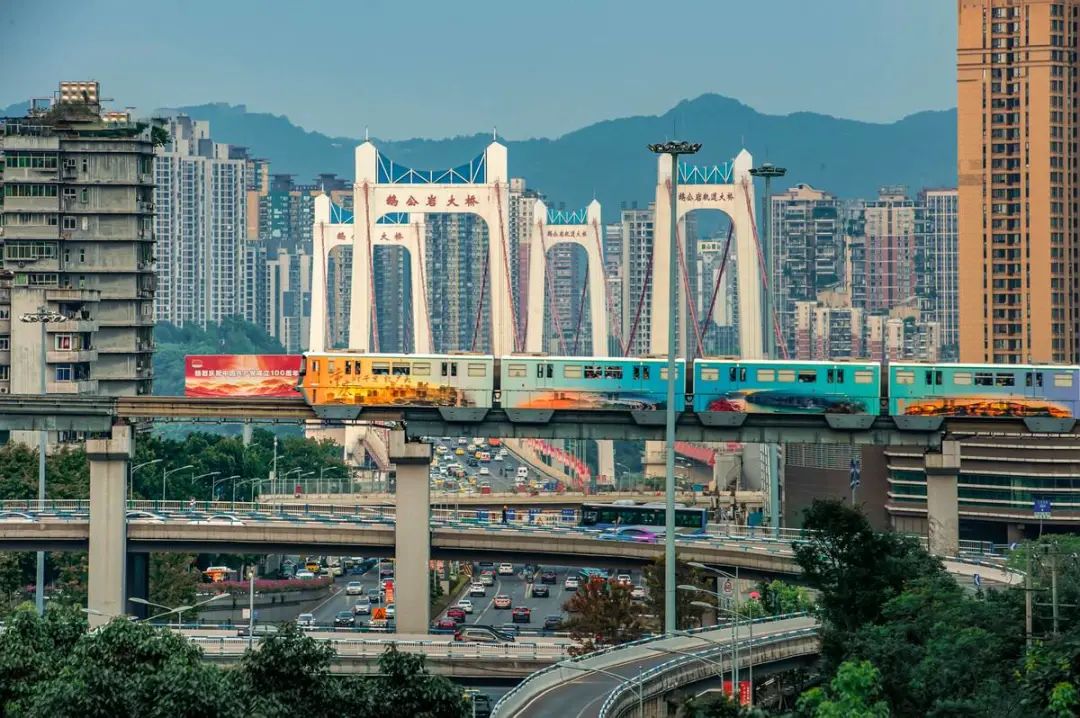
鹅公岩大桥全长1.42千米。其对改善重庆的交通网络结构,推动重庆和西部的社会经济发展起到重要作用。
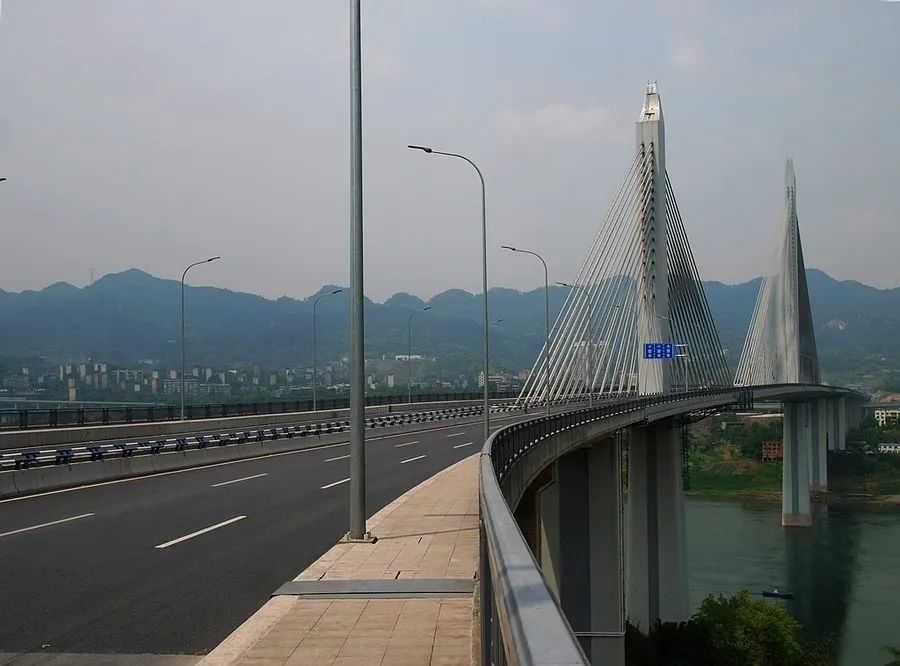
双碑嘉陵江大桥线路全长1928米,造型简洁、生动,形似两座双尖碑,寓意“双碑”。
“好个重庆城,山高路不平”。重庆轮番上演的穿楼轻轨、错落立交、跨江大桥成就了其交通的独特魅力。从小心翼翼的轮渡到昂首阔步的大桥,从蜿蜒盘旋的步道到宽阔明亮的立交,重庆人逢山开路遇水架桥,其惊人的适应力正是加快建设国际性综合交通枢纽的核心力量。
("Chongqing, what a glamorous city! With mountain roads so many!" The building-crossing light rail, the multi-layered overpasses, and the river-crossing bridges have all contribute to its unique charm. With wisdom and industry, Chongqing people have taken full advantage of different types of terrain, and created different means of transportation accordingly, from susceptible ferries to imposing bridges, from winding footpaths to grand overpasses… Their amazing adaptability is the core driving force to speed up the construction of an international comprehensive transportation hub.)
部分资料源于网络
我要评论 (网友评论仅供其表达个人看法,并不表明本站同意其观点或证实其描述)
全部评论 ( 条)